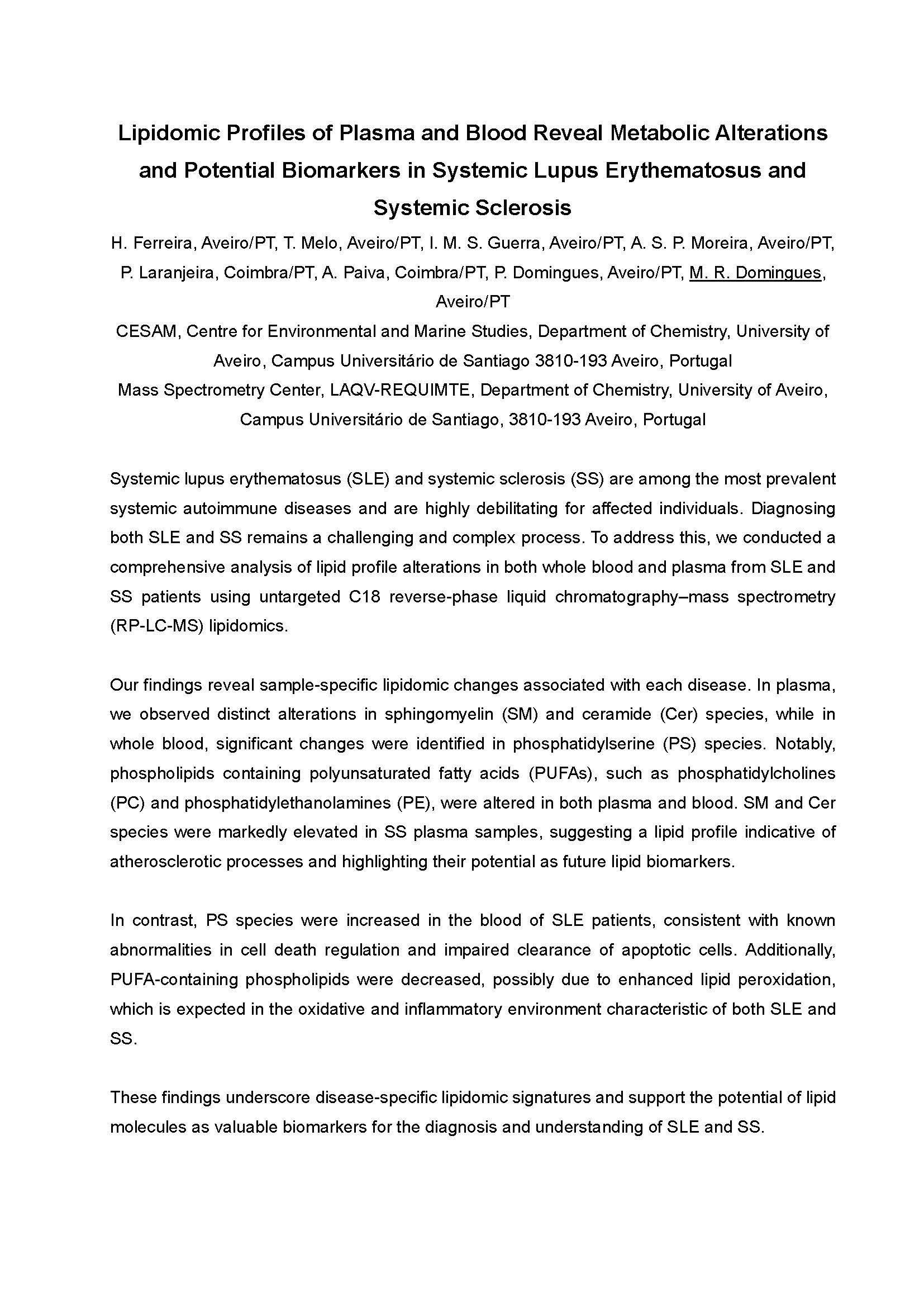Systemic lupus erythematosus (SLE) and systemic sclerosis (SS) are among the most prevalent systemic autoimmune diseases and are highly debilitating for affected individuals. Diagnosing both SLE and SS remains a challenging and complex process. To address this, we conducted a comprehensive analysis of lipid profile alterations in both whole blood and plasma from SLE and SS patients using untargeted C18 reverse-phase liquid chromatography–mass spectrometry (RP-LC-MS) lipidomics.
Our findings reveal sample-specific lipidomic changes associated with each disease. In plasma, we observed distinct alterations in sphingomyelin (SM) and ceramide (Cer) species, while in whole blood, significant changes were identified in phosphatidylserine (PS) species. Notably, phospholipids containing polyunsaturated fatty acids (PUFAs), such as phosphatidylcholines (PC) and phosphatidylethanolamines (PE), were altered in both plasma and blood. SM and Cer species were markedly elevated in SS plasma samples, suggesting a lipid profile indicative of atherosclerotic processes and highlighting their potential as future lipid biomarkers.
In contrast, PS species were increased in the blood of SLE patients, consistent with known abnormalities in cell death regulation and impaired clearance of apoptotic cells. Additionally, PUFA-containing phospholipids were decreased, possibly due to enhanced lipid peroxidation, which is expected in the oxidative and inflammatory environment characteristic of both SLE and SS.
These findings underscore disease-specific lipidomic signatures and support the potential of lipid molecules as valuable biomarkers for the diagnosis and understanding of SLE and SS.
